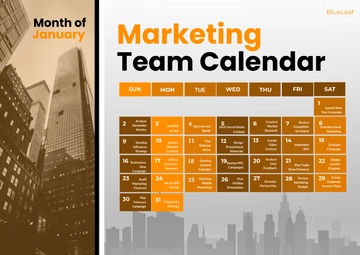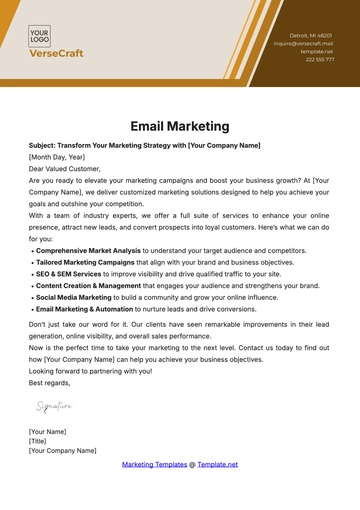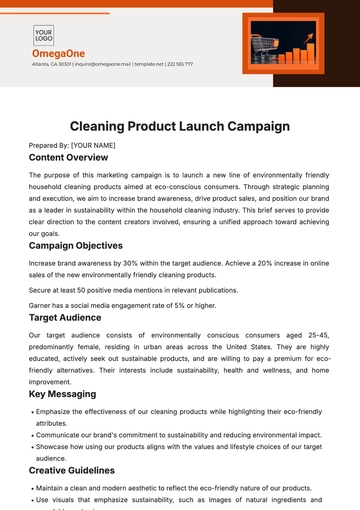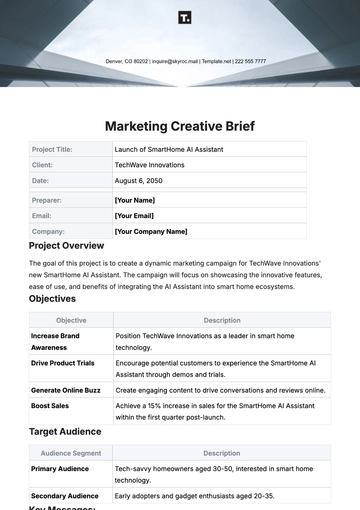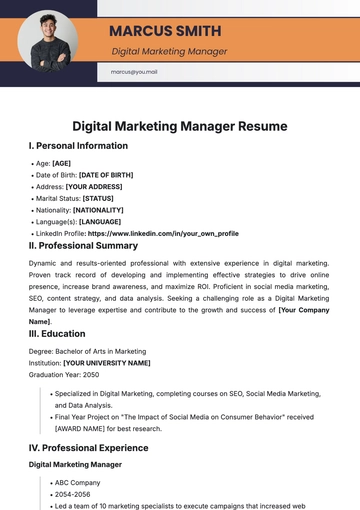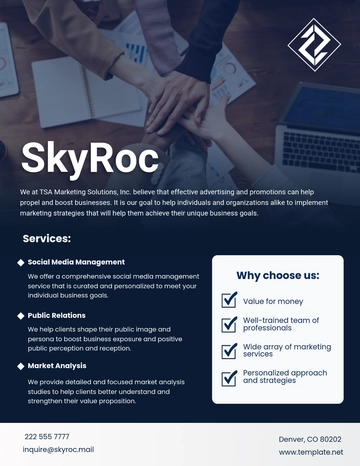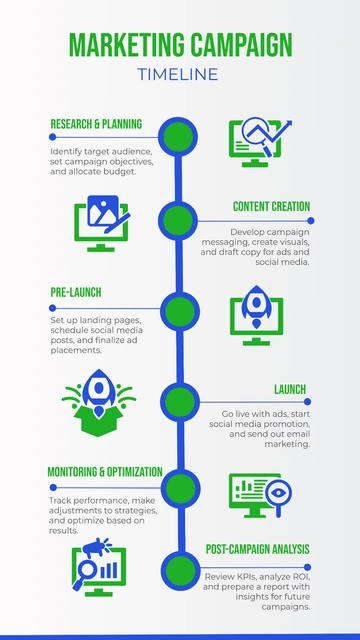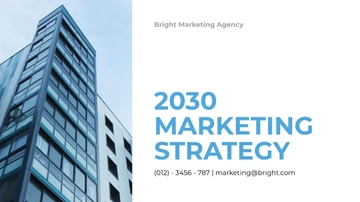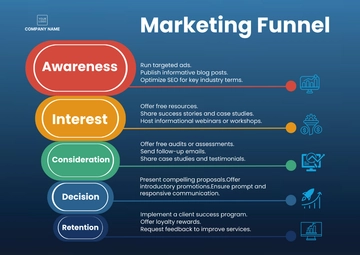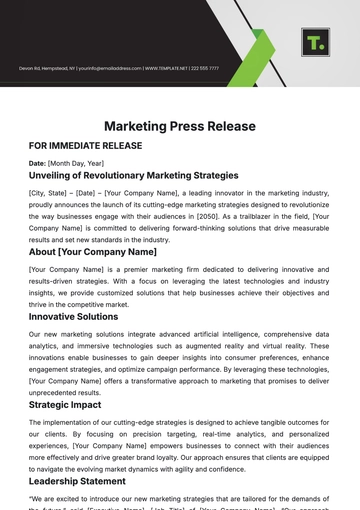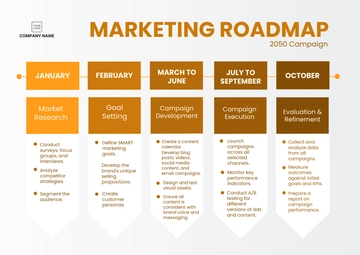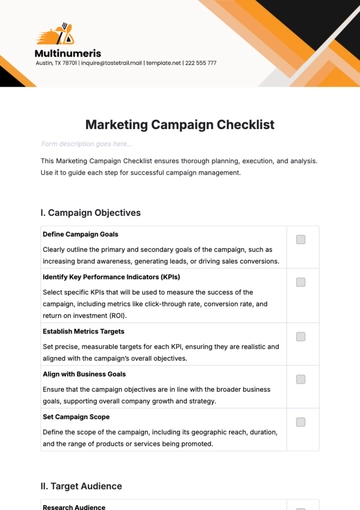Free School Marketing Strategy
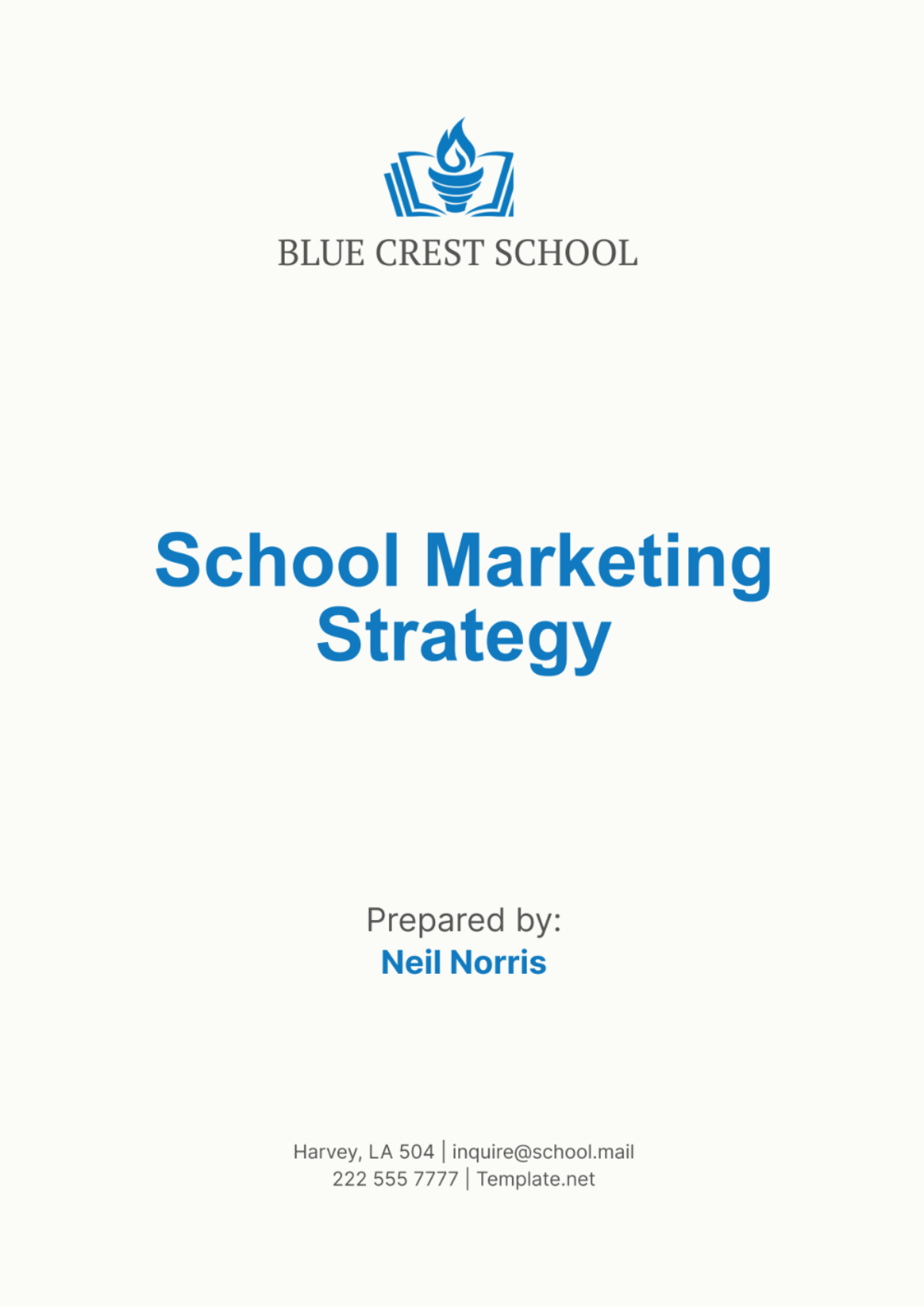
I. Executive Summary
The primary goal of our School Marketing Strategy is to drive a 20% increase in enrollment for the upcoming academic year. To achieve this, we will concentrate on bolstering our online presence through targeted social media campaigns and search engine optimization (SEO), aimed at attracting prospective students and their parents. This approach aligns with our overarching strategy to enhance brand visibility and engagement across digital platforms, ensuring our school remains top-of-mind for families seeking quality education options.
Moreover, our strategy entails leveraging data-driven insights to tailor marketing messages effectively. By analyzing demographic and behavioral data, we will personalize our communications to resonate with both current and potential students. Additionally, we will foster strong community relations by actively participating in local events, hosting open houses, and collaborating with community organizations. These initiatives are designed to not only raise awareness about our school but also to establish meaningful connections within our local community, positioning us as an integral part of the neighborhood.
Furthermore, we recognize the importance of continuous improvement and adaptability in our marketing approach. As such, we will regularly review and analyze the performance of our marketing efforts, using key metrics to assess their effectiveness. This data-driven approach will enable us to refine our strategies, ensuring we remain agile and responsive to market trends and student needs. By implementing these strategic initiatives, we are confident in our ability to achieve our enrollment targets and solidify our position as a leading educational institution in the region.
II. Online Presence Enhancement
To improve our School Marketing Strategy and attract prospective students, we will employ a multi-faceted approach.
Social Media Campaigns: Our strategy includes the creation of engaging and targeted content for platforms such as Facebook, Instagram, and Twitter. By regularly posting updates, stories, and interactive content, we aim to increase our reach and engagement with prospective students and their parents. Additionally, we will utilize social media advertising to amplify our message and target specific demographics, ensuring our content reaches those most likely to be interested in our school.
SEO: To improve our search engine visibility and attract more organic traffic to our website, we will enhance our SEO strategy. This includes optimizing our website's content with relevant keywords, improving site speed and user experience, and obtaining quality backlinks. By ranking higher in search engine results pages (SERPs), we can increase our school's visibility to potential students who are actively searching for educational options.
Website Optimization: Ensuring our website is user-friendly, mobile-responsive, and contains up-to-date information about our school is crucial. We will regularly audit our website to identify and fix any issues that may hinder user experience or search engine performance. Additionally, we will create compelling landing pages for specific campaigns or events to drive conversions and engagement. A well-optimized website not only improves user experience but also reflects positively on our school's credibility and professionalism.
These actions collectively contribute to enhancing our online presence, making it easier for prospective students and parents to discover and engage with our school. By implementing a comprehensive online strategy, we are confident in our ability to attract a wider audience and achieve our enrollment goals.
III. Data-Driven Marketing
Data analysis plays a pivotal role in our School Marketing Strategy. By studying student demographics and preferences, we can tailor our messages to resonate with specific audience segments. This approach allows us to create personalized content that is more relevant and engaging, ultimately increasing interest and enrollment in our school.
Aspect | Description |
|---|---|
Data Analysis | Utilize data from surveys, website analytics, and social media insights to understand student demographics and preferences. |
Study current student profiles to identify trends and preferences, such as preferred communication channels and content types. | |
Analyze demographic data, including age, location, and interests, to create targeted marketing campaigns. | |
Personalized Messaging | Create customized content for different audience segments based on data insights. |
Tailor messages to resonate with specific demographics, ensuring content is relevant and engaging. | |
Implement personalized email campaigns, social media posts, and website content to enhance the user experience. | |
Outcome | Increase the relevance and impact of marketing efforts by delivering content that meets the needs and interests of the target audience. |
Enhance engagement and interest from potential students by providing personalized communication. | |
Improve enrollment rates by delivering more relevant and engaging content, leading to a higher conversion rate. |
By leveraging these insights, we can improve the relevance and impact of our marketing efforts, thereby enhancing engagement and interest from potential students.
IV. Community Engagement
Our School Marketing Strategy prioritizes community engagement through open houses and local event participation, aiming to build strong relationships and enhance our school's reputation. Collaborations with local organizations will further establish our presence, attracting prospective students and families.
Aspect | Description |
|---|---|
Strategy Focus | Prioritize community engagement to strengthen relationships and enhance school reputation. |
Establish presence in the local community to attract prospective students and families. | |
Engagement | Conduct open houses to provide families with an opportunity to visit and learn about the school. |
Participate in local events, such as fairs, festivals, and community gatherings, to raise awareness about the school and interact with community members. | |
Engage in outreach activities, such as school tours and informational sessions, to connect with potential students and their families. | |
Partnerships | Collaborate with local organizations, businesses, and government agencies to create mutually beneficial relationships. |
Sponsor or host community events to demonstrate commitment and support for the local area. | |
Establish an advisory board comprising community leaders and stakeholders to provide insights and guidance on community engagement initiatives. | |
Benefits | Build strong community relations, enhancing the school's reputation and credibility. |
Establish the school as an integral part of the local community, making it a more attractive choice for prospective students. | |
Increase visibility and awareness of the school among community members, leading to potential enrollment growth. | |
Enhance recruitment efforts by creating a positive impression among community members, potentially leading to word-of-mouth referrals. | |
Create networking opportunities for students, faculty, and staff through partnerships and collaborations with local organizations. | |
Improve community relations by demonstrating a commitment to social responsibility and community engagement. | |
Gain access to resources, expertise, and support from local partners, enhancing the school's capabilities and offerings. | |
Foster a sense of belonging and pride among students, faculty, and staff by showcasing the school's involvement and impact in the community. | |
Support local businesses and organizations through partnerships and collaborations, contributing to the overall economic development of the community. |
By fostering these connections, we will enhance our school’s presence and reputation in the community, making it a more attractive choice for prospective students.
V. Content Marketing Plan
Our Content Marketing Plan is designed to showcase the unique aspects of our school's educational offerings and culture, setting us apart from competitors and appealing to potential students and their parents. Through a variety of content types, including success stories, student testimonials, and behind-the-scenes content, we aim to highlight our educational excellence and vibrant school culture.
Aspect | Description |
|---|---|
Strategy Focus | Showcase the unique aspects of the school's educational offerings and culture through compelling content. |
Appeal to potential students and their parents by highlighting the school's educational excellence and vibrant school culture. | |
Content Types | Success Stories: Highlight achievements of students and alumni to demonstrate the school's impact and success in education. |
Student Testimonials: Share experiences from current students to provide authentic perspectives on the school experience. | |
Behind-the-Scenes Content: Offer a glimpse into everyday school life, showcasing the environment and activities that make the school special. | |
Creation and Promotion | Develop high-quality content that is engaging, informative, and relevant to the target audience. |
Promote content through various channels, including the school's website, social media platforms, email newsletters, and community events. | |
Benefits | Differentiate the school from competitors by highlighting its unique strengths and attributes. |
Build credibility and trust among potential students and their parents by sharing authentic stories and experiences. | |
Increase brand awareness and visibility, attracting a larger audience of prospective students and families. | |
Enhance engagement with current students, alumni, and the wider community by providing valuable and relatable content. | |
Foster a sense of community and pride among students, faculty, and staff by showcasing their achievements and contributions. | |
Measurement and Success | Track engagement metrics, such as website traffic, social media interactions, and email open rates, to gauge the effectiveness of content. |
Monitor enrollment rates and inquiries to assess the impact of content marketing efforts on student recruitment. | |
Collect feedback from students, parents, and alumni to evaluate the relevance and impact of content. | |
Adjust content strategy based on data and feedback to optimize performance and achieve marketing goals. |
This diverse content will help in building a relatable and appealing image of our school to potential students and their parents.
VI. Professional Development
Investing in our marketing team's professional development is crucial to the success of our School Marketing Strategy. By providing training and keeping them updated with the latest trends, we ensure our marketing strategies are innovative and effective.
Aspect | Description |
|---|---|
Importance | Emphasize the significance of investing in the professional development of the marketing team to ensure the effectiveness and success of the School Marketing Strategy. |
Training Opportunities | Provide various training opportunities, including sessions, workshops, and conferences, to keep the team updated with the latest trends and best practices in marketing. |
Offer access to online courses and resources to expand knowledge and skills in areas such as digital marketing, content creation, and data analysis. | |
Benefits | Enhance the team's expertise and proficiency in marketing, enabling them to implement innovative and effective strategies. |
Improve the quality of marketing campaigns and initiatives, leading to increased engagement and interest from potential students. | |
Foster a culture of continuous learning and improvement within the team, promoting creativity and innovation in marketing strategies. | |
Implementation | Develop a professional development plan that outlines specific training objectives and timelines for the marketing team. |
Provide opportunities for team members to share knowledge and insights from training sessions with the rest of the team. | |
Evaluation | Regularly assess the effectiveness of training programs and their impact on the team's performance and the School Marketing Strategy. |
Collect feedback from team members to identify areas for improvement and additional training needs. | |
Adjust the professional development plan based on feedback and evaluation results to ensure it aligns with the goals of the School Marketing Strategy. |
VII. Performance Analysis and Continuous Improvement
Regular performance analysis and feedback gathering are key to ensuring the effectiveness and success of our School Marketing Strategy. By establishing clear Key Performance Indicators (KPIs) and gathering feedback from students, parents, faculty, and other stakeholders, we can identify areas for improvement and make necessary adjustments to optimize our performance and achieve our enrollment goals.
Aspect | Description |
|---|---|
Importance | Highlight the importance of regular performance analysis and feedback gathering in ensuring the effectiveness and success of the School Marketing Strategy. |
Key Performance | Establish clear Key Performance Indicators (KPIs) to track the progress and success of the marketing efforts. |
Indicators (KPIs) | Examples of KPIs include enrollment rates, website traffic, social media engagement, conversion rates from inquiries to applications, and return on investment (ROI) from marketing campaigns. |
Feedback Gathering | Utilize various methods to gather feedback, including surveys, focus groups, interviews, and social media listening tools. |
Solicit feedback from students, parents, faculty, and other stakeholders to gain a comprehensive understanding of their perceptions and needs. | |
Performance Analysis | Regularly analyze KPIs to assess the effectiveness of the marketing strategy and identify areas for improvement. |
Conduct SWOT (Strengths, Weaknesses, Opportunities, Threats) analysis to evaluate the internal and external factors that may impact the marketing strategy. | |
Use data analytics tools to gain deeper insights into the performance of marketing campaigns and initiatives. | |
Continuous Improvement | Implement a process for continuous improvement, including regular reviews of KPIs and feedback, and a mechanism for making adjustments to the marketing strategy. |
Encourage a culture of innovation and creativity within the marketing team to generate new ideas and approaches. | |
Collaborate with other departments, such as admissions and academic departments, to align marketing efforts with overall school objectives. | |
Benefits | Improve the overall effectiveness and efficiency of marketing efforts, leading to increased enrollment and engagement. |
Enhance stakeholder satisfaction by addressing feedback and making improvements based on performance analysis. | |
Increase the school's competitiveness and market position by adapting to changing market trends and student preferences. | |
Drive strategic decision-making by providing actionable insights derived from performance analysis and feedback. |
This iterative process will help us ensure continuous improvement and effectiveness of our marketing efforts.
- 100% Customizable, free editor
- Access 1 Million+ Templates, photo’s & graphics
- Download or share as a template
- Click and replace photos, graphics, text, backgrounds
- Resize, crop, AI write & more
- Access advanced editor
Introducing the School Marketing Strategy Template from Template.net! This fully customizable and editable template is designed to streamline your marketing efforts. Editable in our AI Editor Tool, you can easily tailor each section to suit your specific needs. Elevate your school's brand, attract more students, and achieve your marketing goals effortlessly. Discover enhanced simplicity and efficiency today!
You may also like
- Marketing Google Slide
- Marketing Letter
- Marketing Quotation
- Marketing Report
- Marketing Strategic Plan
- Marketing Plan
- Marketing Proposal
- Marketing Flyer
- Marketing Presentation
- Real Estate Marketing Plan
- Marketing Contract
- Marketing Agreement
- Marketing Resume
- Marketing Checklist
- Marketing Brochure
- Marketing Banner
- Marketing Schedule
- Marketing Vector
- Marketing Logo
- Marketing Chart
- Marketing Campaign Plan
- Marketing Budget
- Marketing Postcard
- Marketing Poster
- Marketing Facebook Post
- Marketing Instagram Post
- Marketing Newsletter
- Marketing Infographic

